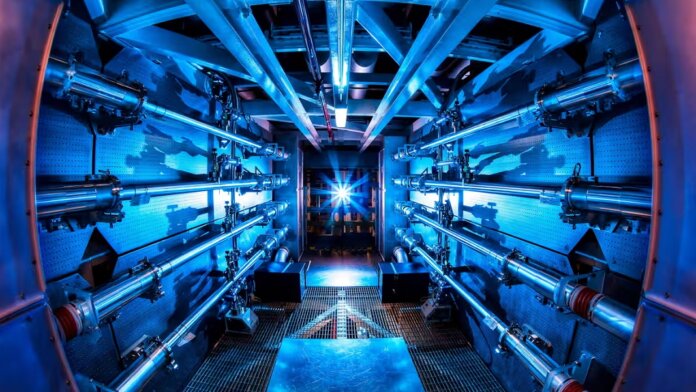Fusion power has long been seen as a pipe dream, but in recent years the technology has appeared to be edging closer to reality. The second demonstration of a fusion reaction that creates more power than it uses is another important marker suggesting fusion’s time may be coming.
Generating power by smashing together atoms holds considerable promise, because the fuel is abundant, required in tiny amounts, and the reactions produce little long-lived radioactive waste and no carbon emissions. The problem is that initiating fusion typically uses much more energy than the reaction generates, making a commercial fusion plant a distant dream at present.
Last December though, scientists at the Lawrence Livermore National Laboratory made a major breakthrough when they achieved “fusion ignition” for the first time. The term refers to a fusion reaction that produces more energy than was put in and becomes self-sustaining.
Now the team at the National Ignition Facility has repeated the feat, according to a report in the Financial Times. And this time they produced an even higher energy yield than the previous demonstration, suggesting that progress is gathering pace.
“Since demonstrating fusion ignition for the first time at the National Ignition Facility in December 2022, we have continued to perform experiments to study this exciting new scientific regime. In an experiment conducted on July 30, we repeated ignition at NIF,” a spokesperson for the laboratory told the FT. “As is our standard practice, we plan on reporting those results at upcoming scientific conferences and in peer-reviewed publications.”
The National Ignition Facility uses an approach to fusion called inertial confinement, in which an array of 192 incredibly powerful lasers is fired into a gold canister with a tiny pellet of fuel in the middle. The fuel pellet consists of two different isotopes of hydrogen called deuterium and tritium.
As the lasers hit the inside of the gold canister, they generate X-rays that heat and compress the fuel pellet to extremely high levels, creating a plasma. This creates the conditions for the fuel’s hydrogen atoms to fuse together and create helium atoms, releasing a burst of energy in the process. The entire process lasts just a billionth of a second and the fuel pellet is just one millimeter across, but this is still enough to generate a considerable amount of energy.
During last year’s test, the facility was able to generate 3.15 megajoules of energy, which was roughly 50 percent more than the energy in the laser beams. This time around, the group generated more than 3.5 megajoules, marking a significant improvement in just a matter of months.
The key to the improvement is down to the researchers’ growing understanding of how to control the underlying fusion reaction, Jeremy Chittenden at Imperial College London told New Scientist. By maintaining the plasma for longer, the team was able to squeeze more energy out of the process.
There are a lot of caveats. For a start, while the reactions generated more energy than was in the laser beams, actually powering the lasers and the rest of the facility used considerably more energy. For a fusion reactor to be viable, it would need to generate significantly more power than the total energy required to run the plant.
What’s more, the approach to fusion taken at the lab is not particularly well-suited to creating a working power plant. It takes a full day to set up a single ignition experiment like this because the lasers need time to cool, and the researchers need to replace the fuel pellet manually. To generate a significant amount of power you’d need to be running the reaction multiple times a second.
Most other efforts to create a fusion reactor rely on an approach called magnetic confinement, in which ultra-powerful magnets are used to contain a high-temperature plasma for extended periods of time. While none of these have yet achieved fusion ignition, the approach is probably more amenable to building a commercial power plant.
But even if it’s unlikely to lay down the blueprints for future fusion power plants, the NIF’s demonstration of fusion ignition and its rapid progress in energy yields is likely to provide considerable encouragement to the field.
Image Credit: Lawrence Livermore National Laboratory/Reuters



